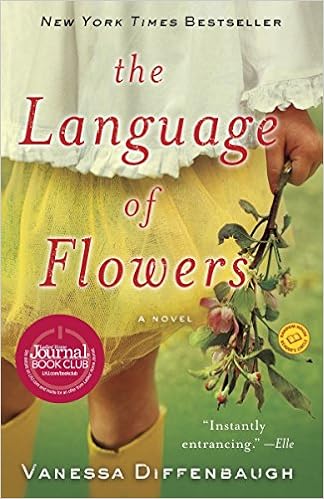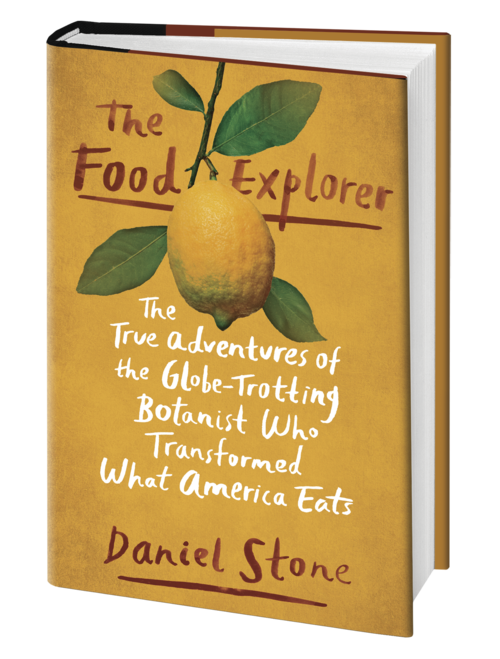
This past week I sneaked away for a bit to visit the heartland and see my son's graduation from Army Basic Training. Heading out to Missouri, I also tucked away a book in my carry-on. I had started up
Animal, Vegetable, Miracle by Barbara Kingsolver a few weeks ago, but homelife and work outcompeted for my time. My mother, a reader who devoured the book in under a week, wholeheartedly endorsed the book. She does have a knack for finding just the right book for me to read, and I vowed to finish the book during this trip.
Seeing my son after 10 weeks was such a thrill. He stood taller, acted so respectfully and still loved his family. Time stood still for the moments my family had together with him, and we thoroughly enjoyed our time with him. But all great things come to an end, and our son shipped off for Norfolk, VA and we headed back home.
Diving into the book again, it was ironic that I had just come from the frigid winter Missouri just started. This California girl has lived out of state only two times, first for a few months in North Carolina and then for 3 years in Indianapolis, Indiana. I've had a little taste of cold weather and life outside of the Golden State; but I decided long ago a small taste was all I wanted and quickly moved back to California. Now I live in California's Central Valley, often called the salad bowl of the United States. That's because of our temperate, mediterranean climate and acres of year-round farming.
Animal, Vegetable, Miracle is the Kingsolver family's experience living off of the land in southern Appalachia, an area we gardeners would probably think of as USDA Hardiness Zone 7, with the first frost coming on November 15th and the last frost on April 15th with a low of -15 degrees C (5 degrees F) for the year. That's much colder than here in California, but warmer than Missouri. So, with winter quickly approaching, reading about her family's experience living off the land for a year was quite interesting.
Life Similarities: I have to say that this book may have me peering at myself through a different geographic and generational lens. Barbara and her family have a rambling, wooded country property with about a 3,500 square foot garden plot. She has gardened throughout her life, and grew up in the south's tobacco country on a farm. She has planted asparagus, leafy greens and various other plants at her residences throughout her adult life.
I too grew up on rambling country plot with an extensive garden plot with orchards, a chicken-house and the occasional goose, turkey or goat around the yard. My parents went "back to the land" and built their own house and established gardens wherever something would grow. That required good soil, WATER, and sun. We ate homegrown produce throughout the year, and preserved as much of the bounty as possible. As an adult, I've owned my own garden nursery company, had a greenhouse and always keep a small kitchen garden. Right now my citrus trees are producing their first crop and my bees are buzzing contentedly in their hive. Homemade preserves line my pantry and my freezer is stock full of tomato puree and pesto.
While Kingsolver has built a livelihood around her writing, I have had the good fortune of building a livelihood within the agriculture business. The wine business is quite glamorous in many regards, but it is still an agricultural one. Farmers deal with the elements, plan harvests and manage their land the best they can.
Farming Trend: In the last few years we have had a boon of "back to the farm" converts. The word locavore was the New Oxford American Dictionary's Word of the Year in 2007, which ironically is the year this book was published. Farm-to-table dining is all the rage today. My hero Michael Pollan hooked me with
The Botany of Desire, kept me reading his next books and now I keep coming back for his Netflix documentary series
Cooked.
Teaching others about agriculture: As Barbara Kingsolver discusses, educational gardens are popping up all over. Probably about 15 years ago I spearheaded a school garden project here in Sacramento with the intention of allowing urban children to learn about growing food. This garden is now one of 54 school garden sites in the district, and an incubator for sustainable and green projects within the district. I do want to give complete credit for the vibrancy of the project to the School Garden Director, a woman who tirelessly raises funds and provides educational opportunities to Sacramento City students throughout the area. I may like to start a garden, but it takes a lot of hard work and dedication to keep a garden going.
Working in Agriculture: Working with wonderful farmers and vintners is very rewarding, and brings me very close to the production of food and wine. Working on roles in agricultural operations, vineyard management and farming brings me up-close and personal with the people who produce the food and wine we eat. These are all very talented and passionate individuals. They live the farm-to-table movement on a daily basis.
Yearning for my own piece of heaven: So reading Animal, Vegetable, Miracle was quite engaging. And I have to say a bit envy-causing. Today I don't live on a big spread where I can walk the dog and check for morels on the back 40. I can no longer run to the chicken house to get the eggs. Luckily, my chicken soup no longer has feathers in it like when I was growing up, but that was delicious chicken soup!
Perhaps
Animal, Vegetable, Miracle would have seemed more earth shattering if I'd picked it up right upon publication. But reading it now, I enjoyed the contrast of farming in California versus Virginia, and my children are close in age to the ages of Barbara Kingsolver's children when she wrote the book. My 3rd grader would love to raise chickens for profit, and my older children are active in sustainable endeavors including beekeeping, falconry and brewing (brewing may be more of a local play, but still quite suitable for the locavore movement). Thinking it over when I planned to write this, I decided I was just jealous of Kingsolver's garden. I want to finish up this post and run out in my lettuce fields to weed them and then go check on my hens. But I can't do that. I'm envious.

A consolation prize may be the recipes her family included in the book. Loving to bake bread as I do, her husband put in some notes on how to quickly bake bread for the family. And her daughter put in several recipes. Tonight I'm trying the Pumpkin Soup in its Own Shell, using my Halloween cinderella pumpkin I picked up at
Cool Patch Pumpkins, less than an hour away. Read the book, try to eat local and see how you can make it work for yourself. You just may see a bit of yourself in the book, like I did.




 Quick book review while I'm on the road in New Zealand. New Zealand is quite a big place, and over the last week I've covered about 1500 miles of road on the south island. During this time, my husband has done an excellent job of keeping us on the left side of the road while I've been reading aloud from Dr. Henry Marsh's newest book,
Quick book review while I'm on the road in New Zealand. New Zealand is quite a big place, and over the last week I've covered about 1500 miles of road on the south island. During this time, my husband has done an excellent job of keeping us on the left side of the road while I've been reading aloud from Dr. Henry Marsh's newest book, 






